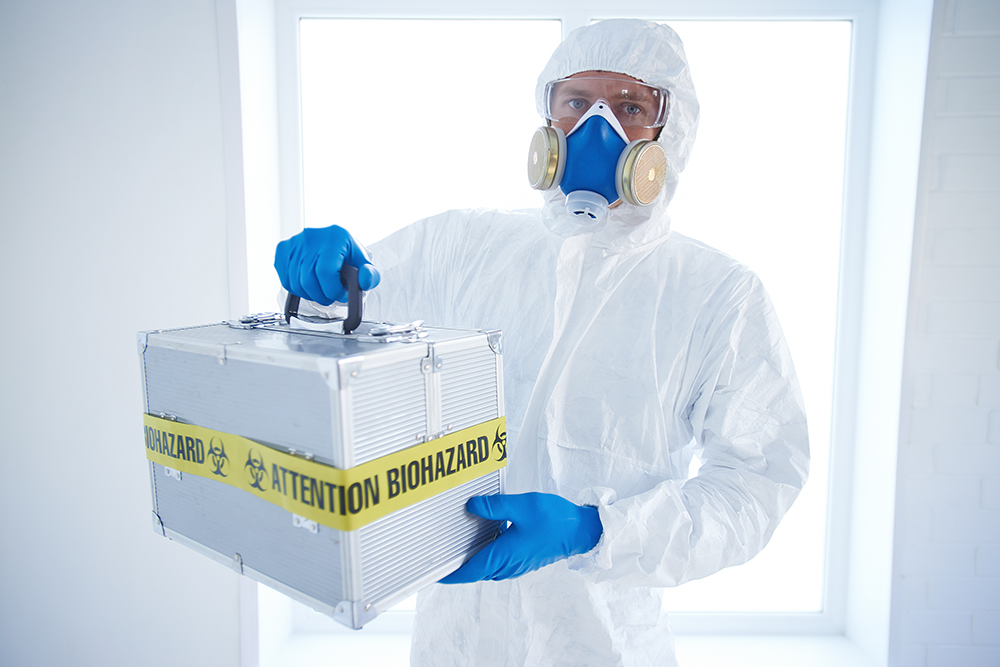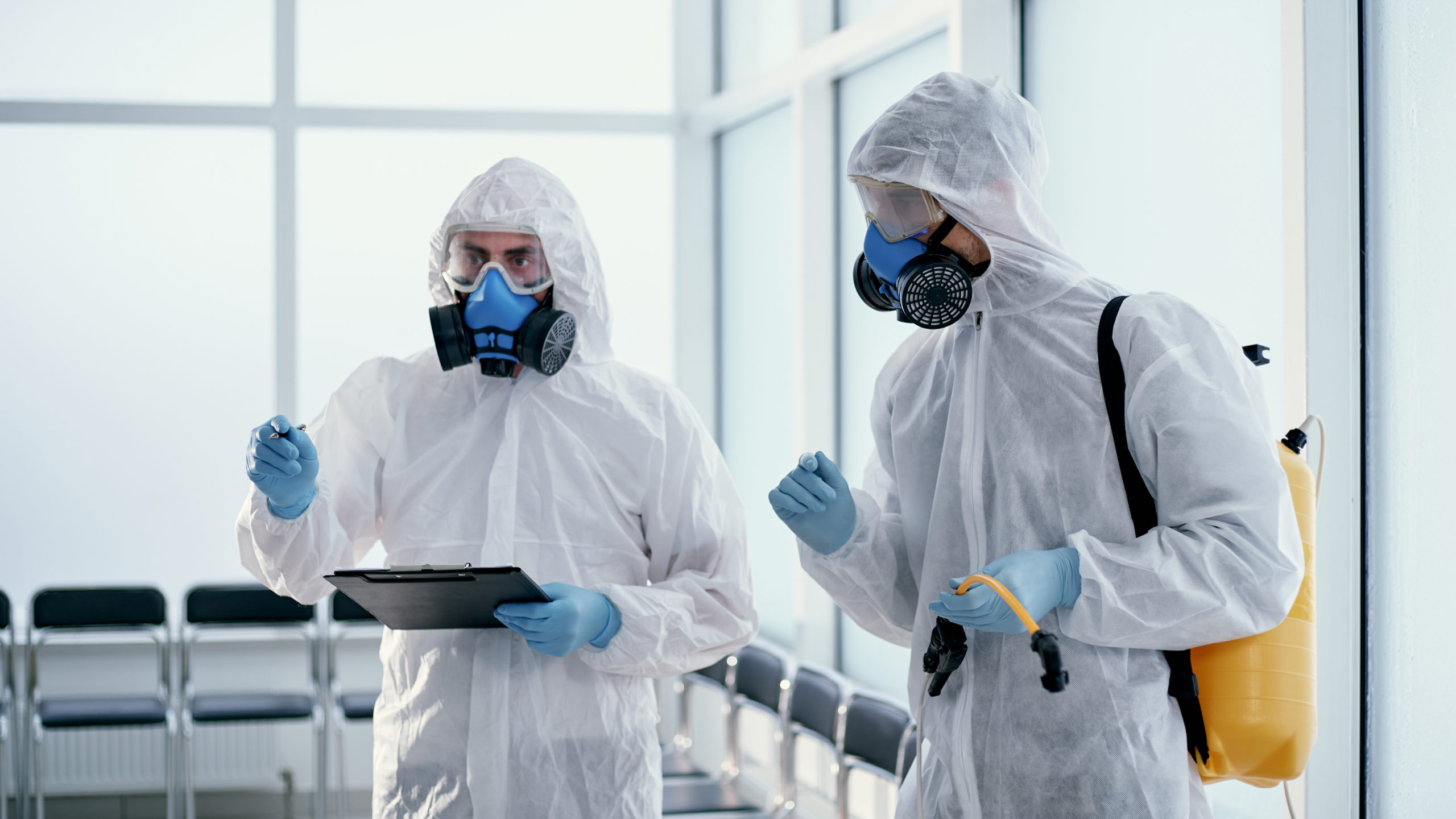Expert Biohazard Cleaning and Decontamination for Blood, Bodily Fluids, and Hazardous Materials
In the world of biohazard cleaning and decontamination for blood, bodily fluids, and hazardous materials, precision and expertise are vital. The possible wellness threats connected with direct exposure to biohazards emphasize the crucial demand for thorough handling and thorough clean-up. Specialized training outfits professionals with the knowledge and abilities essential to address these harmful circumstances successfully. Nevertheless, it is not merely about tidying up; the importance of utilizing appropriate decontamination techniques can not be overemphasized. As we browse the intricate landscape of biohazard cleanup, recognizing the nuances of policies, compliance, and the customized equipment at play comes to be important in making sure a detailed and safe decontamination process.
Health And Wellness Dangers of Biohazard Direct Exposure
Direct exposure to biohazards positions substantial health dangers that can cause extreme consequences for people and areas alike. Biohazards incorporate a large range of organic compounds, including blood, physical liquids, mold and mildew, microorganisms, viruses, and other possibly contagious materials. When individuals enter contact with these biohazards, whether via mishaps, incorrect handling, or environmental direct exposure, they face the threat of contracting serious ailments or diseases.
One of the key wellness threats connected with biohazard direct exposure is the transmission of infectious illness. Bloodborne microorganisms such as HIV, liver disease B and C, and different bacteria can be present in biohazardous materials, positioning a direct threat to human health. Breathing in air-borne biohazards like mold spores or coming into call with contaminated surface areas can likewise result in breathing problems, allergies, and various other adverse health results.
Additionally, biohazard exposure can have long-term health and wellness implications, with some diseases materializing years after the preliminary contact (Blood Cleanup). For that reason, it is critical to focus on proper biohazard cleaning and decontamination to minimize these health and wellness risks and make sure the security of individuals and areas

Specialized Training for Biohazard Clean-up
When it comes to taking care of biohazard clean-up successfully and safely, specialized training plays a fundamental role in making sure proper decontamination treatments are followed. Biohazard cleaning requires details knowledge and skills to efficiently reduce dangers connected with bloodborne microorganisms, physical fluids, and harmful materials. Specialists learnt biohazard cleanup go through extensive guideline on just how to safely take care of, remove, and deal with biohazardous materials to stop contamination and direct exposure.
Specialized training for biohazard clean-up covers a series of necessary subjects, including proper individual protective tools (PPE) use, bloodborne virus recognition, purification methods, and contaminated materials disposal protocols. Individuals educated in biohazard clean-up are equipped with the needed know-how to evaluate contamination degrees, determine potential threats, and carry out ideal clean-up procedures in conformity with regulatory standards.
Continual training and education are critical in the field of biohazard cleanup to remain upgraded on the most recent decontamination technologies, safety and security protocols, and policies. By spending in specialized training, biohazard cleaning specialists can effectively react to emergency situation cleanup situations and guard both public wellness and the setting.
Value of Proper Purification Methods
Making use of correct decontamination methods is crucial in biohazard cleanup to efficiently decrease and remove dangerous materials health and wellness threats. Effective purification not just ensures the elimination of noticeable traces of blood, bodily liquids, and other biohazards however also targets invisible microorganisms that might pose severe wellness risks if not properly removed. By following rigid purification methods, trained experts can considerably decrease the risk of exposure to harmful bacteria, infections, and bacteria that can bring about illness or infections.
Appropriate purification strategies include using customized devices and anti-bacterials that are especially made to neutralize biohazards effectively. Detailed cleansing and sanitation of contaminated areas are crucial to avoid the spread of pathogens and make certain a secure setting for occupants. Furthermore, the appropriate disposal of biohazardous waste complying with decontamination procedures is important in protecting against contamination of various other surface areas or individuals.

Devices and Devices for Safe Cleaning
When dealing with blood, physical liquids, or hazardous products, biohazard cleansing specialists count on specialized gear to reduce exposure threats and thoroughly decontaminate the afflicted location. Furthermore, biohazard cleansing sets containing anti-bacterials, More hints absorptive materials, and biohazard bags are utilized to securely get rid of and have of polluted items.
Advanced cleansing devices like hospital-grade anti-bacterials, HEPA-filtered vacuums, and misting machines are utilized to sterilize surface areas and remove biohazards efficiently. Specialized devices such as sharps containers and biohazard waste disposal containers are made use of to securely manage sharp things and biohazardous waste materials. By making use of the appropriate tools and devices, biohazard cleaning specialists can make sure a comprehensive clean-up procedure that focuses on safety and reduces health and wellness dangers for both workers and passengers of the affected room.
Rules and Compliance in Biohazard Cleaning
Appropriate adherence to regulations and compliance requirements is extremely important in biohazard cleansing to make certain the security of both workers and the environment. Government companies such as OSHA (Occupational see here Security and Wellness Administration) and the EPA (Epa) have actually established details guidelines for biohazard cleanup treatments to reduce health risks and ecological contamination. These guidelines cover an array of facets consisting of the handling, transportation, and disposal of biohazardous materials, as well as the necessary training and safety equipment required for employees entailed in the clean-up procedure.
Biohazard cleansing firms should stay up-to-date with these regulations to assure that their operations satisfy the required safety and security requirements. Failing to abide by these guidelines can cause extreme consequences, including penalties, lawsuit, and threatening the health and wellness of individuals and the setting. By complying with rigorous policies and compliance steps, biohazard cleaning companies can successfully reduce dangers and ensure a secure and thorough clean-up procedure for all events included.
Verdict
To conclude, biohazard cleansing and decontamination call for customized training, correct strategies, and adherence to laws. Direct exposure to blood, physical liquids, and harmful materials presents considerable health threats, making it crucial to utilize the ideal equipment and tools for safe cleaning. By complying with stringent protocols and standards, specialists can effectively mitigate the threats connected with biohazard direct exposure and make certain the safety and security of both themselves and others.
As we browse the elaborate landscape of biohazard cleanup, comprehending explanation the subtleties of policies, compliance, and the customized equipment at play ends up being necessary in guaranteeing a secure and comprehensive purification process. (Blood Cleanup)
When it comes to dealing with biohazard cleaning efficiently and securely, specialized training plays a basic role in making sure correct decontamination treatments are adhered to.Using appropriate purification strategies is vital in biohazard cleanup to effectively eliminate hazardous products and reduce health risks. Additionally, biohazard cleansing kits including disinfectants, absorptive materials, and biohazard bags are utilized to safely contain and dispose of infected items.
Federal government firms such as OSHA (Occupational Safety And Security and Health And Wellness Administration) and the EPA (Environmental Protection Firm) have established particular guidelines for biohazard cleanup treatments to lessen health and wellness dangers and ecological contamination.